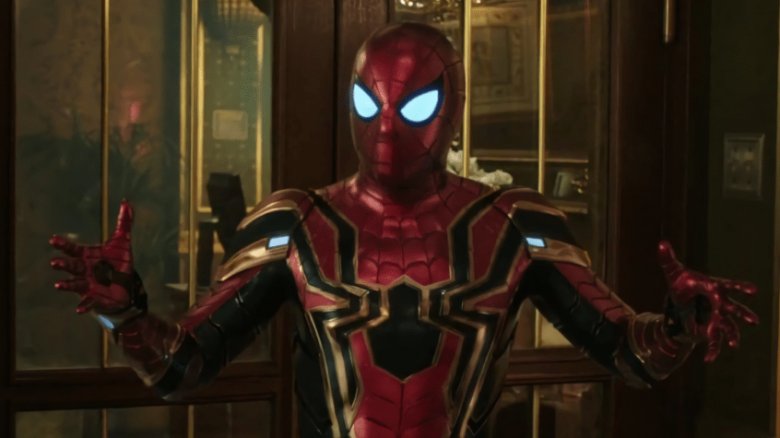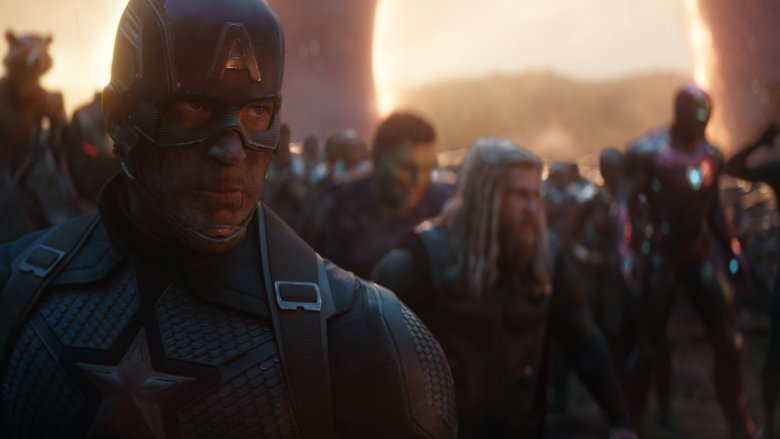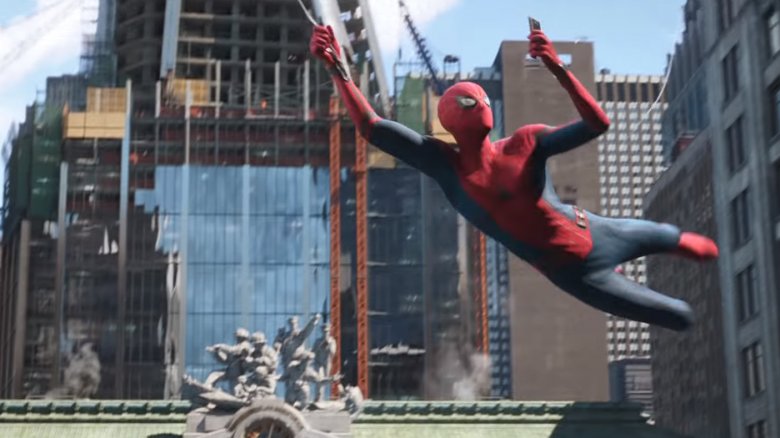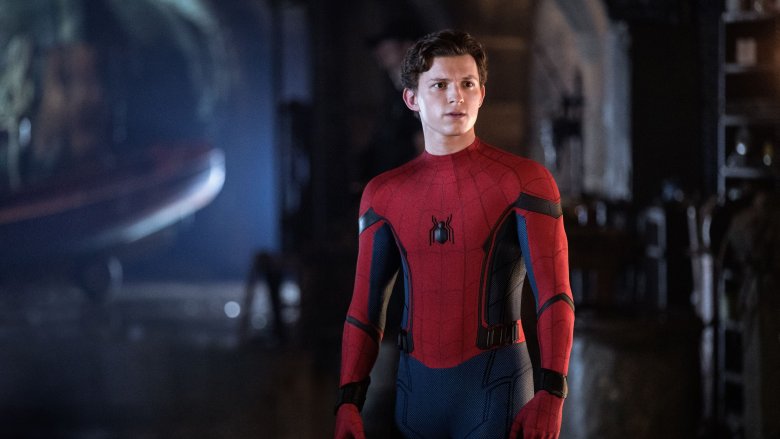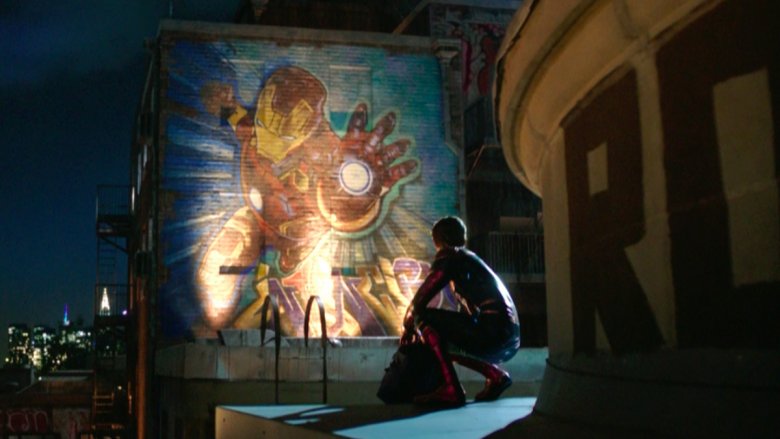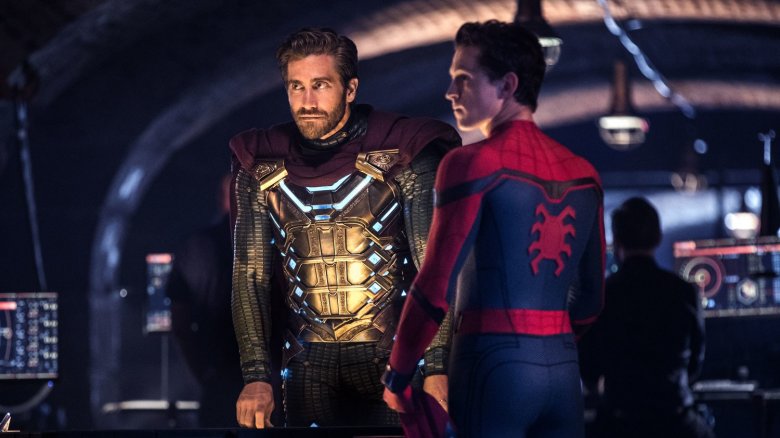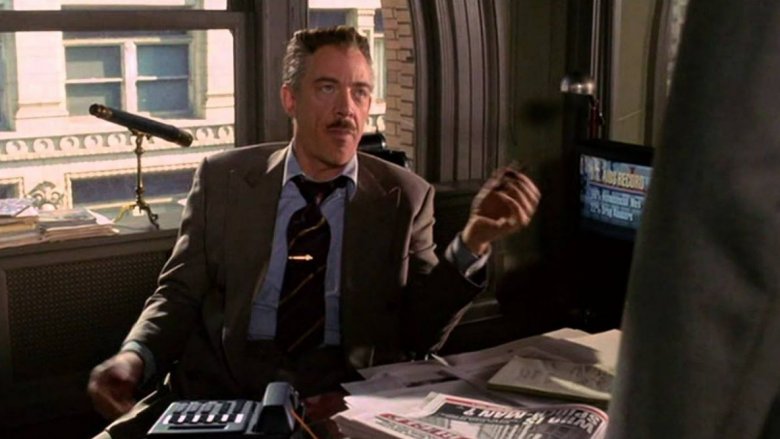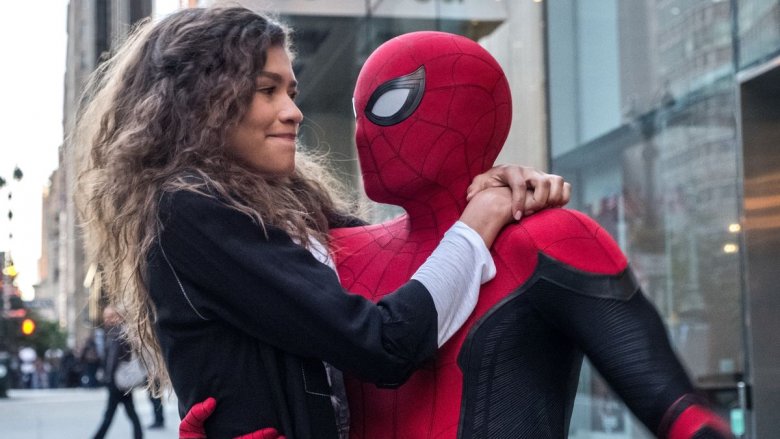Why Spider-Man: Far From Home Blew Everyone Away At The Box Office
Well, Marvel's done it again. The studio dropped yet another box office bombshell in Spider-Man: Far From Home, which racked up an impressive opening weekend haul of $185 million. A tidy sum, to say the least... and that's just the domestic total. In the first six days after the film hit theater marquees, it also added a robust $395 million in international ticket sales, bringing the movie's gross total up to a staggering $580 million.
Marvel's box office success is starting to feel par for the course these days. But even so, the numbers for Far From Home are still well above the rather hefty expectations that had been set for Spidey's second solo swing through the Marvel Cinematic Universe. While it's easy to point to any one factor as the cause for this success, the reality with every modern Marvel flick is that the mind-blowing numbers can't be attributed to one single event or cause. In fact, there's a plethora of different factors that go into each MCU success story.
That said, let's break this one down and see what it was that got the masses into the theaters to see the web-head yet again on opening weekend. Spoilers to follow!
An Endgame epilogue
If there's one element to the success of Far From Home that stands tall above all others, it has to be the "Endgame aura" that the film was clearly basking in. Coming just two short months after the Avengers' climactic time heist broke the opening weekend record to the tune of $1.2 billion, Far From Home promised to serve as a sort of epilogue to the end of an era. In fact, the connection was made abundantly clear when a preview of Far From Home was added to the Endgame re-release in the place of an end credit scene.
The truth is, while Endgame was extremely satisfying, the film was juggling a lot of different pieces from beginning to end, and a low-key film — comparatively speaking — like Far From Home was needed to answer a few basic questions. For instance, it showed what life was like in the aftermath of the "Blip" — a term coined by the film's characters for everyone who had abruptly been "unsnapped" in Endgame. It addressed elements like age differences caused by the five-year gap and showed us how the world was handling the loss of high-profile heroes like Tony Stark.
There's no doubt that Far From Home stands on its own as a stellar installment of the MCU. But that doesn't change the fact that people were lining up specifically to see the fallout of Endgame and what a world without the likes of Tony Stark and Steve Rogers looks like.
Avengers: Re-Endgamed
As if all of the natural Endgame momentum wasn't enough, another driving factor that the fourth Avengers gave to Far From Home was the sizzling energy of a re-release. After several weeks in theaters, Endgame drew desperately close to passing Avatar for the biggest box office event of all time. However, with the film dropping from theaters fast, the trickle of sales just wasn't going to cut it. So, to the delight of many Marvel superfans (and the dismay of others), Kevin Feige announced in June of 2019 that the studio would re-release the film along with one final marketing push — clearly with an eye towards beating that darned record.
The competitive attitude, even if both properties are owned by the House of Mouse at this point, was fun. However, the re-release of one of the biggest movies of all time served a second purpose, too: it pushed Far From Home even further into the limelight. Released just days before the Spidey sequel hit theaters, Endgame effectively stirred the waters, bringing Marvel back into the forefront of everyone's minds, along with the fact that Far From Home promised some juicy answers to those lingering Endgame questions.
The charm of Tom Holland
Endgame was certainly a major factor in the success of Far From Home. But Peter Parker also had plenty going for him all on his own as well, not the least of which was the plain and simple fact that everyone loves him. The Crime Stopper from Queens is one of the most popular superheroes of all time at this point, with his genetically enhanced abilities and his down-to-earth schoolboy antics continually captivating audiences ever since the first moment he swung onto the scene over half a century ago.
In the case of Far From Home, in addition to the inherent charisma of the character, you also have to add the natural charm of Tom Holland. Andrew Garfield did a compelling (if sobering job) as Peter Parker in his pair of Amazing Spider-Man films, and the web-slinging wonder boy Tobey Maguire will always hold a nostalgic place in our hearts and minds. However, it's hard to argue with the fact that Tom Holland has created one of the most popular renditions of Spider-Man to date. Fans have loved every second of this younger, more wide-eyed Parker, and the popularity of Holland's Spidey has certainly kept interest in the character fresh and exiting ever since he first appeared in Captain America: Civil War.
The Spectacular Spider-Summer
Theaters always do brisk business during the warmer months, with drive-ins in full swing and school shut down until September, and Spider-Man: Far From Home took full advantage of that summer rush.
While early 2019 had already seen Avengers: Endgame and Captain Marvel roll into town (both of which passed the billion-dollar mark), the year as a whole had started off pretty miserably for the box office. In the first month and a half, the entire domestic total was a paltry $1.2 billion, the lowest it had been since 2011. While Carol Danvers and the Avengers managed to break things up, they were fighting against some pretty hefty static friction.
By the time Far From Home came out, though, the movie-going season was in full swing. A procession of bigger films like John Wick 3, Aladdin, and Toy Story 4 had greased the wheels, allowing the third and final MCU film of 2019 to cruise right into one of the busiest movie-going seasons of the year.
Spider-Man's long week
Another fact that quietly yet effectively boosted Spider-Man: Far From Home's numbers was that it was released on a Tuesday. This gave the film an artificially long six-day "opening weekend." The decision to do so made complete sense, as the original release date had been the following Friday, July 5th. However, Sony (distributors of solo Spider-flicks under their deal with Marvel), made the wise decision to move that date up to before the Independence Day celebrations rather than after them.
The move was done in order to avoid any negative repercussions from the holiday, which can be, as Anthony D'Alessandro from Deadline puts it, "unforgiving to titles." The shift to Tuesday allowed the movie to gain some momentum heading into the 4th of July, and the move paid off in spades. Not only did it hit a home run at the box office, but it broke both Tuesday and Wednesday ticket sales records — even beating out Endgame in the process. With the six-day holiday weekend in its back pocket, it's no wonder the wall-crawler's adventures abroad made for a good opening weekend.
Closure on the MCU as we know it
Another subtle element that helped build momentum was the fact that the film served as the finale not only to Phase 3 but also the the Infinty Saga as a whole. Heading into Endgame, it was popularly believed that the fourth Avengers installment would be the end of the line for the saga of the Stones.
However, Kevin Feige cleared up the misunderstanding during an interview in which he stated that Far From Home was an important final piece of the saga. The Marvel boss explained, "The relationship between Peter Parker and Tony Stark is so special... that we needed to see where his journey went, and see how does Spider-Man step out of the shadow of his mentor, Tony Stark, and become the true hero that he was always meant to be..."
The fact that Far From Home wasn't just a follow up to Endgame, but was literally the last part of the other twenty-two films of the franchise thus far, made it a must-see experience that had to be done in theaters on opening weekend before anyone could spoil the surprises it contained.
Mysterious villains... or not villains?
Quentin Beck, a.k.a. Mysterio, is one of the best characters yet to make the leap from the comic pages to the MCU. Brought to life by Jake Gyllenhaal, the character is a spectacular combination of a compelling background, sinister motives, and twisted logic. He's a villain with depth and motivation that resonates with the viewers — or at the least, that they can empathize with.
While it doesn't take long to become clear that Mysterio is a villain, true to his name, the character's motives are initially pretty hard to pin down. In fact, he enters the story seemingly as a protagonist. Even the trailers spun him as a hero from another dimension, a sort of "Iron Man replacement," so to speak.
And, while hindsight is 20/20, Beck's truly evil motives weren't a sure bet going into the film. After all, just a few months before, Marvel had pulled a 180 with the Skrulls in Captain Marvel, turning the classic comic book villains into tragic protagonists on the screen. While Beck ultimately showed his true colors, his loyalties were an open question beforehand, and one that likely pushed many viewers to head to theaters looking for an answer (and avoiding spoilers).
A question of cameos
Another curious question that hung in the air before Spider-Man: Far From Home was released was what delectable fan service would be in store this time around. One question, in particular, was who would get a cameo or make a surprise appearance in the film. What random, unexpected character might pop into a scene somewhere? It was reported that Stan Lee's last cameo had been in Endgame (and that turned out to be true), but that didn't mean the concept of the cameo would be left by the wayside.
The trailers already showed characters like Happy Hogan and Nick Fury, but who else would be involved? For starters, Fury himself ends up being none other than the Skrull, Talos (Ben Mendelsohn), in disguise. But the cameos don't stop there. Peter Billingsley reprises his role as William Ginter Riva, the scientist confronted by Obadiah Stane in Iron Man. Heck, one could even argue that Tony Stark ends up making a sort of "indirect cameo" via the glasses he leaves for Peter, appropriately named EDITH (or "Even Dead, I'm The Hero"). Of course, the best surprise of all had to be J.K. Simmons' return to his role as J. Jonah Jameson during the first end credit scene.
One way or another, fans knew that the creators at Marvel wouldn't let them down in the cameo department, and sure enough, they came through with flying colors.
The last of the MCU... for a while
There's nothing like scarcity to create interest. For instance, Marvel Studios banked on the power of a lack of information when it refused to share any information about Avengers: Endgame for over half a year after Infinity War hit theaters. The radio silence drove up the hype and nearly guaranteed a good reception for the film on opening weekend.
While it isn't the same exact scenario, Far From Home benefited from the scarcity factor in its own way. The film is the last MCU movie scheduled to release until May 1, 2020 — ten months after Far From Home's release date. And while we do know a few things about the studio's upcoming slate, they haven't officially announced exactly what will arrive in that 2020 slot (as of now, the safest bet is probably Black Widow). While Marvel will resume its two-to-three-films-per-year pace at that point, the break in regularly scheduled content is a daunting one for fans who have gotten used to the steady supply of superhero films on a regular basis.
Needless to say, the awareness that Far From Home was not just as the end of the Infinity Saga but also as the last bit of fresh MCU content anyone was going to see on the big screen until well into 2020 certainly made it a hot commodity.
Spinning Marvel's future
Of course, while Far From Home clearly functioned as a capstone for the Infinity Saga, that hardly means it only had to do with the past. Another alluring factor that Peter Parker's solo sequel promised to deliver on was a little taste of what was to come next — even if that future wasn't going to start until the following year.
The question of how Marvel would begin to reconstruct an MCU without larger-than-life-characters like Tony Stark, Steve Rogers, and even Thanos was a curious one. Would Peter Parker end up stepping into Iron Man's shoes? Would the world be any different — or even make sense — after the snap or the "Blip" that followed? Could Marvel manage to regain any momentum after the crescendo that was Endgame? While the answer to all of these questions ended up being a resounding yes, the desire for answers along with a glimpse of how Marvel was setting things up for Phase 4 was certainly on the minds of many fans as they bought their tickets and popcorn and settled into their local cinemas on opening weekend.
